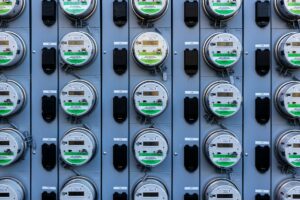What Your Home’s Energy Bills Are Telling You About Your Home’s Efficiency
 Home energy bills tell a story. Pay attention if your gas and electricity costs increase even though you didn’t do anything extraordinary the past month. Your utility bills may be telling you these seven truths about your home’s energy efficiency.
Home energy bills tell a story. Pay attention if your gas and electricity costs increase even though you didn’t do anything extraordinary the past month. Your utility bills may be telling you these seven truths about your home’s energy efficiency.
1. Your Home Leaks Trap Heat
Space heating and air conditioning account for 51% of energy use at home. If your thermal enclosure system underperforms, your energy bills will skyrocket.
A complete thermal enclosure system consists of insulation, air sealing and high-performance windows. These elements ensure your building enclosure is tight enough to keep the outside world from interfering with your indoor climate. Thus, heat will escape in the winter and get inside in the summer if your house is under-insulated and leaks air.
Heat loss usually occurs through the walls, fenestration units, floors, studs, joists and unconditioned adjoining spaces. However, successfully stopping heat loss relies on precision rather than guesswork.
Any do-it-yourselfer can buy a consumer-grade thermal camera and uncover the causes of heat leakage at home. Still, expert advice carries more weight. Inviting a professional energy assessor to audit your home can give you considerable insight into your house’s insulative properties and airtightness. An auditor has advanced tools to conduct comprehensive tests.
This professional’s findings can demystify your home’s poor energy performance and reveal how to boost its efficiency. Such a service may set you back hundreds of dollars, but it will pay for itself if you follow the recommended fixes.
2. You Heat Water Inefficiently
Water heating is another power-hungry home activity. Many American homes use storage tanks to supply enough hot water to multiple users simultaneously. The problem is hot water is subject to heat loss when stored and unused for a long time.
Various alternatives are more efficient. Tankless heaters produce hot water only when needed, but multiple units may be necessary to generate sufficient output for many users at the same time. Electric heat pumps are more efficient than conventional electric resistance water heaters by up to three times, but they’re suitable only in some locations. Solar is free energy but may need a backup system to heat water during cloudy days.
Every option has pros and cons, but some drawbacks are easy to swallow if it means you can noticeably reduce your utility bills.
3. You Have Outdated Bulbs
Artificial lighting is a significant energy expense. Your high energy bills shouldn’t surprise you if you haven’t installed LED bulbs at home yet. LEDs emit little heat and use 75% less energy than incandescent lighting. Longevity is also on the side of LED lights, lasting 25 times longer.
Replacing 4-foot fluorescent tubes with LED lighting can decrease your costs by 44%, according to a recent University of Michigan study. LEDs need less maintenance, too.
4. Your Home Isn’t Smart Enough
Smart home technology can help lower energy usage while maximizing comfort and convenience.
For example, customizing smart thermostats can help you economize. These programmable devices can automatically lower your air temperature when sleeping or outside, reducing energy usage by 1% per degree. They can set and keep it to 65 degrees like clockwork for optimal rest.
5. You Need to Switch From Fossil Fuel to Electric
Fossil fuels are more efficient than electricity. Eco-warriors usually want to swap gas, oil and propane appliances for electric ones for sustainability, not energy efficiency. However, upgrading to an advanced electric heating unit — like a heat pump — is a different story.
For example, a modern electric heat pump is three times more efficient than conventional fossil fuel-fired or electric resistance heating equipment. It releases zero harmful exhaust emissions inside the house because it doesn’t burn anything.
Heat pump installation can be a significant expense, but it may qualify you for financial incentives — such as a tax credit or a utility bill rebate. Additionally, it recorded a 103.5% return on investment in 2023.
Still, the amount of money you can save depends on your area. Air-source heat pumps perform less efficiently and reliably in cold weather. Natural gas, heating oil, propane and electricity prices vary by location. Upgrading to a cutting-edge heating system may not necessarily translate to lower utility bills.
6. Your Landscaping Is Untapped
Your yard can help you heat and cool your home efficiently. Take the cue from your regional climate. It tells you where to put windbreaks to neutralize cold winds and block unwanted solar heat gain with shade. It can also help you maximize breezes for natural ventilation.
In addition, consider your microclimate — the climate of your house’s surroundings. You can have a warm microclimate in a cool regional climate based on your house’s location. Pay attention to both to optimize your landscaping for energy efficiency.
Listen to Your Home Energy Bills
Rising utility costs can be a blessing in disguise. They should be a wake-up call to reassess your home’s energy efficiency, make sustainable upgrades and moderate your consumption. Don’t let a case of bill shock go to waste.


Sorry, the comment form is closed at this time.